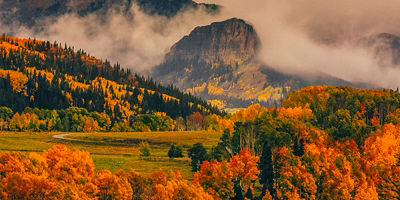
Did you also know that camping, and all the benefits that come with it, can be completely free? Developed campgrounds with amenities charge a nightly fee, but there are plenty of other places to pitch a tent (or park a camper) that won’t cost you a dime. Such sites are called dispersed campsites, and they offer a whole new level of solitude and wilderness to the prepared camper. Think of dispersed camping like backpacking, but with a vehicle assist—you’ll get access to wilder places than a developed campground offers, but can still haul in your favorite camping luxuries.
So, what will you find in a dispersed site? Expect scenery, quiet, and not much else. Primitive sites like these won’t have fire pits, picnic tables, showers, running water, or toilets (nope, not even a pit toilet). When you’re staying in a dispersed site, self-reliance is the name of the game.
In this article, you’ll learn:
- Where to find free campsites
- How to pack and prepare for dispersed camping
- Leave No Trace principles for dispersed camping
Where To Find Free Campsites
Where exactly are these free dispersed campsites? You’ll find them on public land, primarily those lands managed by the U.S. Forest Service (USFS) and the Bureau of Land Management (BLM). Sites are usually found just off of the road. Some are easily accessible to passenger vehicles, while others require four-wheel drive to get to. Here’s how to zero in on the perfect spot.
- Check out maps of your intended destination to find USFS and BLM land. The best maps are the more detailed ones available from the land management agencies, as they’ll show all roads, even the more remote ones.
- Peruse the area using the satellite layer on Google Maps, or more detailed mapping apps. Zoom in on roads and look for small cleared areas just off to the side—bingo, you found a potential campsite!
- Call or stop by the relevant USFS ranger district office or BLM field office and chat with rangers about the best dispersed camping spots.
- Ask employees at a local outdoor store what they recommend.






















